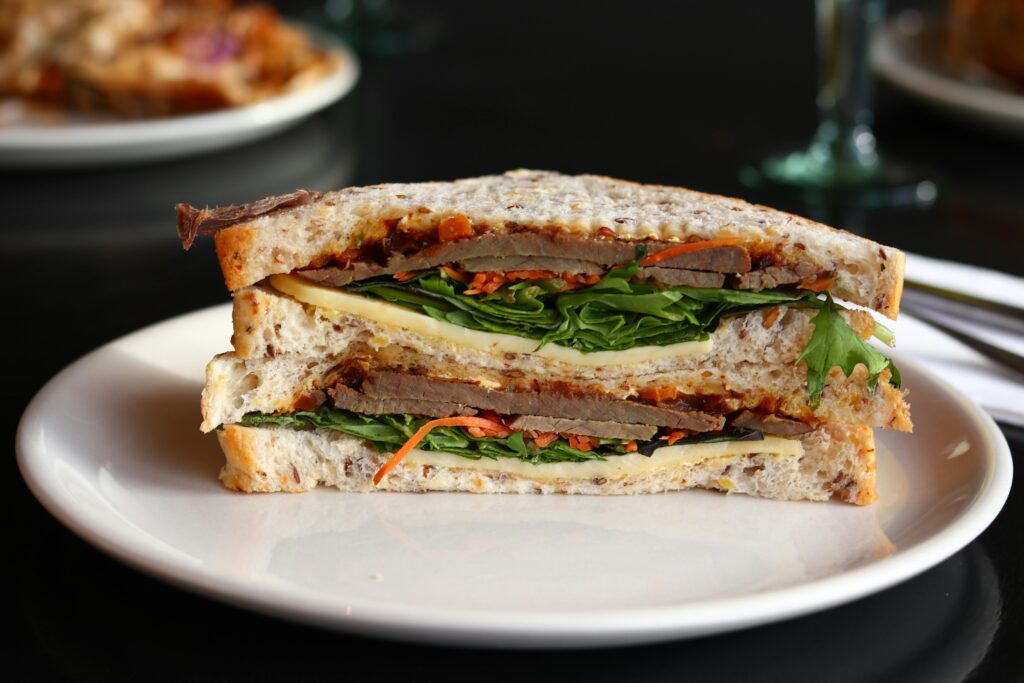Doesn’t it always start the same way? You’re in the middle of making some cookies, biscuits, or pancakes. You measure your flour, beat your eggs, and then there is a spoonful of powder—a baking soda spoonful.
You toss it and move on like it does not matter. But then later on, after some time, you notice something.
Your cookies spread more than what is usual. Your biscuits did not rise at all. Or perhaps it is that your dough felt too soft to shape. You begin wonder— Was it baking soda? If that’s what you’ve been thinking, you’re not on your own. I will tell you exactly why baking soda is going to bake everything different for you. I have been there too, and I will tell you how single ingredient alters everything in the dough.
The First Stir Changes More Than You Think
When you add baking soda into a dough, the chemistry begins—silent but impactful. It doesn’t wait for the oven; baking soda starts reacting the moment you introduce moisture. It starts generating carbon dioxide gas, forming tiny air pockets throughout the dough. These bubbles, which are formed from the baking soda, are trying to push against the structure of the dough to make a place.
The dough is soft, light, and perhaps a little spongy. If you touch it or wait too long, the effect begins to fade. The dough loses lift before it can even bake. This is why it is very important to understand how timing and moisture work together.
If you have ever noticed that your pancakes go flat by the last batch, it wasn’t your pan but the batter losing its rise. That is baking soda at work—but slipping away. By knowing that it starts the race quickly and then doesn’t sprint long, you set yourself in control over the results.
Bubbles Are Texture’s Best Friend—When Controlled
Dough’s bubbles form when the yogurt, vinegar, lemon juice, and buttermilk— different types of acids— work together with baking soda. Baking Soda does one thing best and that is make bubbles. Once the baking soda and acid are combined, it releases carbon dioxide. Soft dough is created and so is an open structure. Bubbles assist in forming the ideal cracked surface in cookies. With biscuits, bubbles enhance fluffiness alongside height. Quick breads become tender and springy from their bubbles. But if bubbles escape before baking, the results will be dense. Other recipes say “mix and bake right away.” directions aren’t overly temperamental; they are simply trying to preserve the rise.
Bubbles transform into puffs, air pockets, or gaps in a pancake. With dough behaving a certain way under pressure, the texture takes on a new meaning. The right handling of baking soda, gives the texture and dough the reaction it needs with pressure.
The Problem With Going Too Fast
Here’s the catch. Baking soda is not patient. The moment you combine it with liquid and an acid, it reacts immediately. In comparison to yeast, which rises over time, or baking powder which rises in two steps, baking soda gives its all right away. This means the dough has to be shaped and baked in a short period of time. If left too long, those bubbles float to the surface and release the stored gas. The rise is forfeited. The structure collapses.
Consider this scenario of shaking a soda bottle and waiting too long to pop the cap. The fizz is present, but the impact isn’t the same. Dough follows this logic too. If the interval before baking is extended, instead of a fluffy muffin, the result will be a sad, squished dome. Timing is critical for avoiding burning, but equally important is encapsulating the texture while bubbles are alive.
The Magic Only Works With Acid
Baking soda does not work alone. It has a partner, and is dormant without it. That partner is acid. The partner fulfills its purpose when incorporated. Add vinegar or buttermilk when trying to make cookies. And you will see THE results which are too dense, metallic, and unremarkable. The effect doesn’t merely bubble forth. It neutralizes the pH, round off the flavor, and provides a gentle, tender bite.
Without acid, the texture of dough remains the same. Add acidity and one experiences the spread and rise, as well as softness. Conduct a bake and without acidity, experience a change in color to a gray and brown hue. Acidity affects not only color, but also the browning of baked goods. This all explains why lemon scones are soft yet pale, and brown sugar-chocolate-chip cookies are crispy and golden. This knowledge allows transforms one from a dough www.essayschief.com follower into a whisperer.
The Inside-Out Change In Dough Behavior
Baking soda not only creates bubbles, it also modifies the structure of the dough. It changes the pH and consequently, the gluten formation. A higher pH means weaker bonds between gluten. Because of that, the dough relaxes. That is also the reason why baking soda causes the dough to feel softer, more pliable, and less stretchy. In some recipes, that is exactly what is required. A chewy cookie actually benefits from that soft and relaxed texture. But in other cases, like with a biscuit where dough needs to shape or rise, excessive softening can actually be an issue.
Consider what the dough is expected to do when you are adding baking soda. Is rising high a requirement? Staying compact? Spreading out? Holding a shape? All of those results come down to one thing: balance between softness and structure. And baking soda is key to that balance.
The Line Between Perfect and Too Much
At first, it might seem plausible that more baking soda equals more lift. This, however, is not true. Too much baking soda creates too many bubbles too fast which the dough is unable to hold. It will rise and then collapse. In more extreme cases, it can spread out of control. Adding too much baking soda will not only hurt the texture; it will also create an unpleasant sharp, metallic bite that lingers on the tongue. This also makes tasting difficult.
On the other end of the spectrum, not putting in enough baking soda can cause the dough to become dense and flat. In this case, the dough neither rises nor puffs, leading to the need to chew your way through the effort. Precise measuring is essential. As little as a quarter teaspoon can greatly change the feel of a cookie or muffin. Once you’ve ruined a batch by guessing, you’re sure to remember that lesson. Believe me, it’s something I’ve done more than once.
When Baking Powder Takes the Stage Instead
We’ve already discussed what baking soda is. What we haven’t is baking powder. While both may appear interchangeable, they function individually. Baking powder contains an acid which allows it to react on wetting and heating—twice. As a result, it allows the dough to rise better than baking soda. It is slower, more forgiving, and works better with doughs that sit for a while before baking.
Baking soda is different. It is a energy conserving sprinter that reacts quickly and then fizzles out. This explains why cookies made with soda tend to spread more and brown faster. Their texture is along the lines of crisp at the edges and chewy in the middle. Baking powder allows the baked item to rise with less risk of sinking, especially in the case of cakes and muffins. Being able to tell the diiference between these items changes everything.
You Can Feel Texture Before It Bakes
By now, you must have worked with enough dough to feel what it will do before being put in the oven. The Softness With which It Feels Between Your Fingers: That Squeeze That Makes You Feel A Bounce As Well As Slack. The Way It Flattens Or Holds Its Shape within a couple of seconds. Everything that has been discussed already is the dough speaking to you. A lot of that dialogue is a result of baking soda.
Baking soda serves an important function and when it does, the dough feels alive. Breathes – gives – has just enough pushback to shape and just the right loosness to move.
This goes to show that the next time you are rolling, kneading and scooping the dough, slow down. Wiggle those electrical signals from your fingers to read this dough story: what is it trying to tell? Is it telling that it is tight? loose? perfect relaxed? All questions which do not require guess work, but require finely tuned signals.
Tuned signals sent before the oven I might add, courtesy of baking soda.
Mastery Comes From Paying Attention
As you continue to use baking soda, its effects become even more apparent. The texture, the flavor, the shape—all of them change based on its application. It is not about rote learning of ratios or occupancy of formulas; rather, it is about being attentive. Indeed, noticing how your biscuit dough feels different when yogurt is used instead of milk, or how the cookies flatten more with softer butter and a bit extra soda. That is what distinguishes recipes from intuitive baking: the lessons that develop from experience cultivate the type of baker you aspire to be.
Mastering baking does not necessitate a food science degree. Rather, one only needs curiosity. Pay attention to how some ingredients make dishes puff up, or crisp open flavorful layers. Discover what sweet and savory contrasts endure and jot these observations down mentally. In looking for these phenomena, I discovered a whole new realm kneaded into the commonplace. This step will surely accompany you too on your professional journey.
My Opinion
The next time you grab a container of baking soda, take a moment. Understand what it does and why it is significant. It is more than white powder—it is a tool for texture, a lift, a softener. It builds bubbles while destroying dullness in equal measure. But it requires you to use it correctly. It requires balance, acid, care, timing. It, in return bestows crackle topped cookies, pride filled biscuits, and cloud like pancakes.
The magic of texture is devoid of mystery—only choice. From now on, with every spoonful taken, you know what choice is being made.






